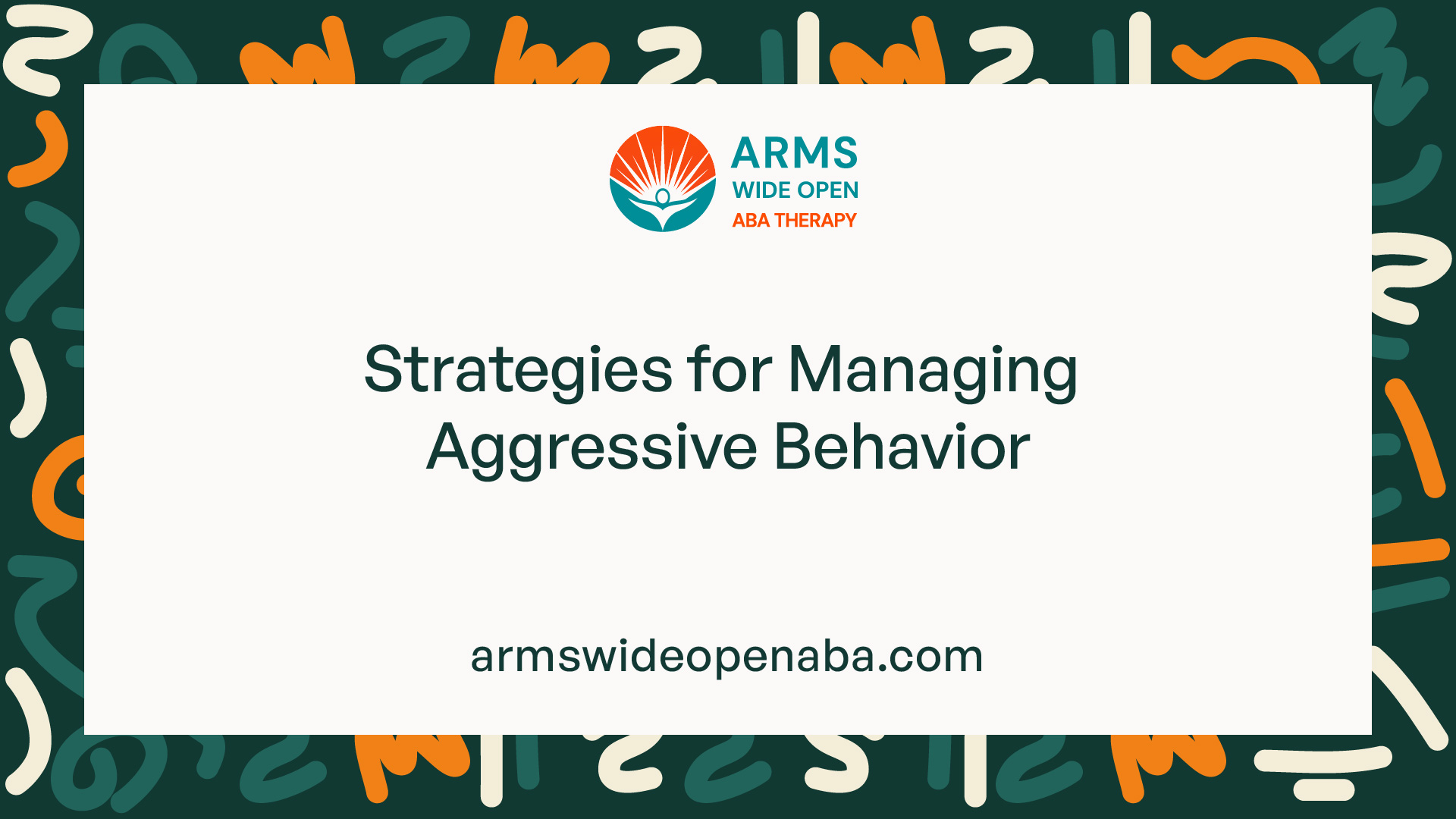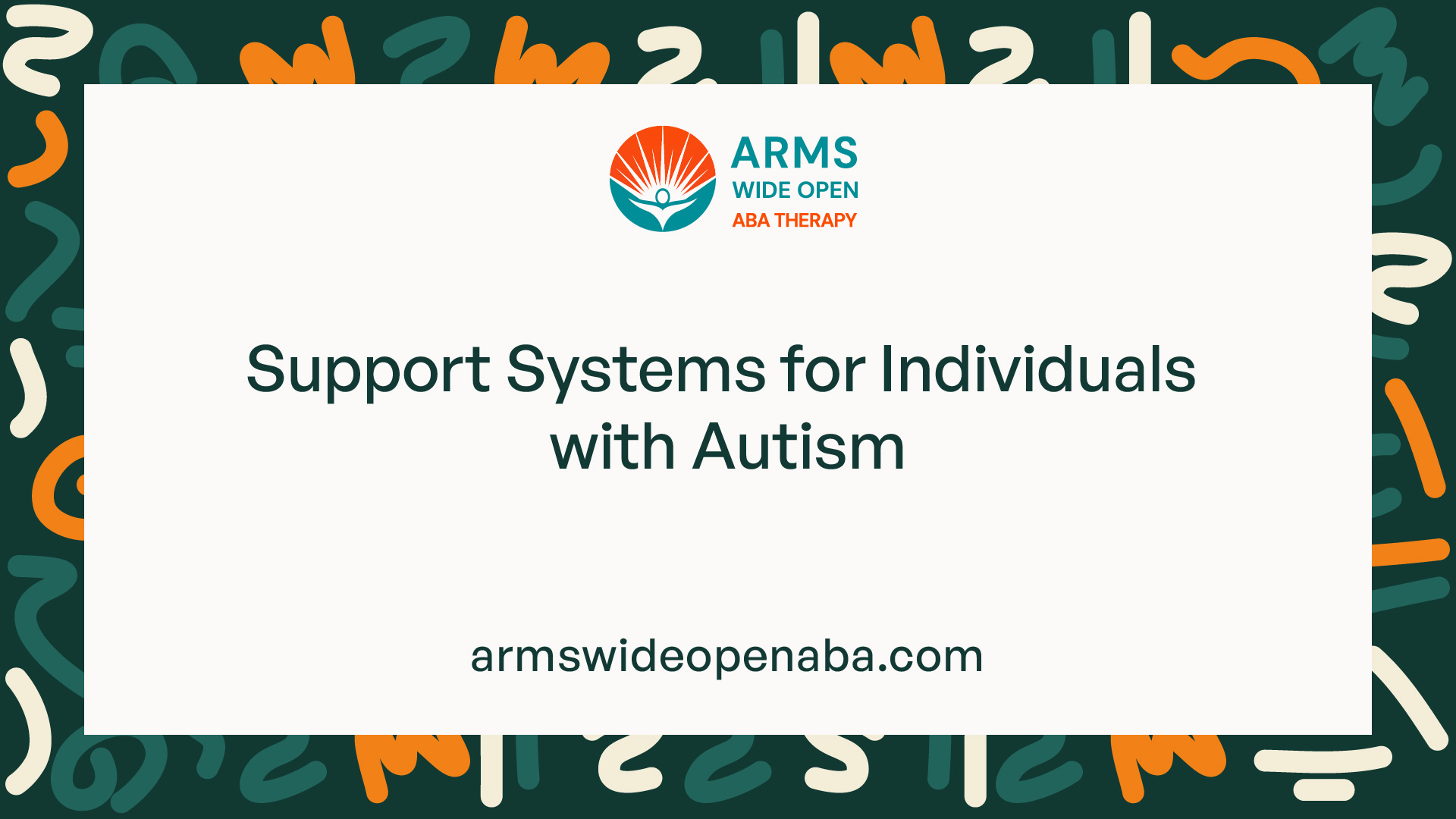Understanding Aggressive Behavior in Autism
Gain insight into aggressive behavior in autism. Understand the factors, strategies, and support systems for a brighter future.


Understanding Aggressive Behavior in Autism
To gain insight into aggressive behavior in individuals with autism, it is important to first understand the basics of Autism Spectrum Disorder (ASD) and how aggressive behavior manifests within this context.
Overview of Autism Spectrum Disorder
Autism Spectrum Disorder is a neurodevelopmental disorder characterized by persistent deficits in social communication and interaction, as well as restricted and repetitive patterns of behavior, interests, or activities. It is a complex disorder that affects individuals differently, resulting in a wide range of abilities and challenges.
ASD is typically diagnosed in early childhood, and its prevalence has been steadily increasing over the years. According to the Centers for Disease Control and Prevention (CDC), approximately 1 in 54 children in the United States is diagnosed with ASD.
Definition of Aggressive Behavior in the Context of Autism
Aggressive behavior in the context of autism refers to behaviors that are physically or verbally harmful to oneself, others, or objects. These behaviors can include hitting, biting, kicking, scratching, throwing objects, or making threats.
It is important to note that aggressive behavior in individuals with autism is not indicative of malicious intent or a character flaw. Aggression is often a result of underlying factors such as sensory overload, communication challenges, and difficulties with emotional regulation.
Understanding the relationship between autism and aggressive behavior is crucial in order to provide appropriate support and interventions for individuals on the autism spectrum. By addressing the underlying factors contributing to aggression, effective strategies can be implemented to enhance the well-being and quality of life for individuals with autism.
Factors Contributing to Aggressive Behavior
Aggressive behavior is a complex aspect of autism that can be influenced by various factors. Understanding these factors is crucial in developing effective strategies for managing and supporting individuals with autism. Let's explore three key contributors to aggressive behavior: sensory overload and meltdowns, communication challenges, and emotional regulation difficulties.
Sensory Overload and Meltdowns
Individuals with autism often experience sensory processing differences, which can lead to sensory overload. Sensory overload occurs when the brain struggles to process and integrate sensory information from the environment, resulting in overwhelming experiences. This overload can trigger meltdowns, which may manifest as aggressive behaviors.
Sensory Overload Triggers
Loud noises
Bright lights
Strong smells
Tactile sensitivity
Overcrowded environments
During a meltdown, it's important to create a calm and safe environment by reducing sensory stimuli. Providing a quiet space, using noise-canceling headphones, or implementing visual schedules can help alleviate sensory overload and prevent aggressive outbursts.
Communication Challenges
Communication difficulties are a common characteristic of autism and can contribute to frustration and aggression. Individuals with autism may struggle with expressing their needs, understanding others, or using appropriate social communication skills. When communication breakdowns occur, it can lead to feelings of frustration and a higher likelihood of aggressive behavior.
Communication Challenges
Limited verbal language
Difficulty understanding non-verbal cues
Challenges with expressive language
Impaired social communication skills
Implementing alternative communication methods, such as visual supports, augmentative and alternative communication (AAC) devices, or social stories, can help individuals with autism overcome communication challenges. Teaching effective communication strategies and providing opportunities for social skills training are also essential for reducing frustration and aggression.
Emotional Regulation Difficulties
Emotional regulation refers to the ability to manage and control one's emotions effectively. Many individuals with autism face difficulties in regulating their emotions, which can lead to aggressive behavior. The challenges in recognizing and expressing emotions, as well as managing stress and anxiety, contribute to emotional dysregulation.
Emotional Regulation Difficulties
Difficulty identifying and labeling emotions
Sensitivity to changes and transitions
High levels of anxiety
Challenges in self-soothing
Supporting emotional regulation involves providing individuals with autism with appropriate coping strategies. This can include teaching relaxation techniques, engaging in sensory-based activities, and implementing structured routines. Creating a predictable and structured environment can help individuals with autism feel more secure and enhance their emotional well-being.
By addressing these factors contributing to aggressive behavior in autism, caregivers, educators, and professionals can work collaboratively to develop effective interventions and support systems. Understanding the unique needs of individuals with autism and implementing individualized strategies can empower them to manage their emotions more effectively and lead fulfilling lives.

Strategies for Managing Aggressive Behavior
When it comes to managing aggressive behavior in individuals with autism, there are various strategies that can be implemented to promote positive outcomes. These strategies focus on behavior modification techniques, sensory integration strategies, and communication and social skills training.
Behavior Modification Techniques
Behavior modification techniques aim to identify and address the underlying causes of aggressive behavior in individuals with autism. By understanding the triggers and patterns associated with aggression, targeted interventions can be implemented to promote more appropriate behavior.
Behavior Modification Techniques
Applied Behavior Analysis (ABA)
Positive Reinforcement
Token Economy Systems
Visual Supports and Schedules
These techniques involve the use of evidence-based approaches such as Applied Behavior Analysis (ABA), which focuses on identifying and reinforcing desired behaviors while reducing problem behaviors. Positive reinforcement, such as rewards and praise, can also be effective in encouraging positive behavior and reducing aggression.
Implementing token economy systems, where individuals earn tokens for displaying appropriate behavior that can be exchanged for desired rewards, can provide motivation and structure. Visual supports and schedules, such as visual cues and written instructions, can help individuals with autism understand expectations and reduce frustration.
Sensory Integration Strategies
Sensory integration strategies play a crucial role in managing aggressive behavior in individuals with autism. Many individuals with autism experience sensory sensitivities or difficulties with sensory processing, which can contribute to feelings of overwhelm and lead to aggression.
Sensory Integration Strategies
Sensory Diets
Deep Pressure and Proprioceptive Input
Visual Supports for Sensory Regulation
Environmental Modifications
Sensory diets, which involve incorporating specific sensory activities throughout the day, can help individuals with autism regulate their sensory system and reduce aggression. Providing deep pressure and proprioceptive input, such as through weighted blankets or compression vests, can also have a calming effect.
Visual supports, such as visual schedules and social stories, can assist individuals in understanding and managing sensory input. Environmental modifications, such as creating quiet spaces or using noise-canceling headphones, can help reduce sensory overload and prevent aggressive episodes.
Communication and Social Skills Training
Effective communication and social skills training are vital for individuals with autism to express their needs, emotions, and frustrations in a more appropriate manner. By improving communication and social skills, individuals can better navigate social interactions and reduce the likelihood of aggressive behavior.
Communication and Social Skills Training
Augmentative and Alternative Communication (AAC)
Social Stories and Scripts
Social Skills Training Programs
Augmentative and Alternative Communication (AAC) systems, such as picture exchange communication or speech-generating devices, can support individuals with limited verbal skills in expressing themselves. Social stories and scripts can help individuals understand social expectations and appropriate responses in various situations.
Social skills training programs, either in a group or individual setting, can provide individuals with autism the opportunity to learn and practice social skills, such as turn-taking, sharing, and conflict resolution. These programs focus on teaching specific social skills and reinforcing positive behaviors.
By employing behavior modification techniques, sensory integration strategies, and communication and social skills training, individuals with autism and their caregivers can develop effective strategies for managing aggressive behavior. It is important to remember that each individual is unique, and a personalized approach is necessary to address their specific needs and challenges.
Importance of Early Intervention
Early intervention plays a critical role in understanding and addressing aggressive behavior in individuals with autism. By identifying triggers and patterns, creating individualized behavior support plans, and collaborating with professionals and caregivers, we can effectively manage and support individuals with autism.
Identifying Triggers and Patterns
Identifying triggers and patterns is essential in addressing aggressive behavior in individuals with autism. By closely observing and documenting the circumstances surrounding aggressive episodes, patterns may emerge that provide insights into the underlying causes. This information can guide intervention strategies and help prevent future incidents.
Observation and documentation can be facilitated through the use of behavior tracking tools, such as ABC (Antecedent-Behavior-Consequence) charts. These charts help identify the antecedents (events or situations preceding the behavior), the behavior itself, and the consequences (what happens after the behavior). Analyzing these patterns can provide valuable information for developing effective strategies to manage and prevent aggressive behavior.
Individualized Behavior Support Plans
Developing individualized behavior support plans is crucial in addressing aggressive behavior in individuals with autism. These plans are tailored to the unique needs and characteristics of each individual and provide a structured approach to managing behavior.
Behavior support plans typically include strategies such as:
- Positive reinforcement: Rewarding desired behaviors to encourage their repetition.
- Teaching alternative behaviors: Teaching individuals appropriate ways to express their needs and frustrations.
- Visual supports: Utilizing visual aids, such as schedules and social stories, to enhance understanding and predictability.
- Environmental modifications: Creating an environment that reduces sensory overload and promotes a calm and supportive atmosphere.
By individualizing behavior support plans, we can effectively address the specific challenges and triggers associated with aggressive behavior in individuals with autism. These plans should be regularly reviewed and adjusted as needed to ensure their ongoing effectiveness.
Collaborating with Professionals and Caregivers
Collaboration among professionals and caregivers is vital in managing aggressive behavior in individuals with autism. A multidisciplinary approach that involves the expertise of professionals such as behavior analysts, therapists, and educators, along with the support and involvement of caregivers, can significantly enhance the effectiveness of interventions.
Regular communication and collaboration among team members allow for sharing of information, insights, and strategies. This collaborative approach ensures consistency in implementing behavior support plans across different settings, such as home, school, and therapy sessions. It also enables professionals and caregivers to provide mutual support, share successes and challenges, and collectively problem-solve.
By working together, professionals and caregivers can create a supportive and cohesive network that maximizes the potential for positive outcomes in managing aggressive behavior in individuals with autism.
Identifying triggers, developing individualized behavior support plans, and fostering collaboration are all essential components of early intervention for aggressive behavior in individuals with autism. By implementing these strategies, we can pave the way for improved outcomes and quality of life for individuals with autism and their families.

Support Systems for Individuals with Autism
Individuals with autism require a supportive network to help them navigate the challenges associated with aggressive behavior. These support systems can make a significant difference in promoting their well-being and enhancing their quality of life. Some key support systems for individuals with autism include family support and education, community resources and services, as well as advocacy and awareness initiatives.
Family Support and Education
Families play a crucial role in supporting individuals with autism. They provide a foundation of love and understanding, and their involvement is vital in addressing aggressive behavior effectively. By offering emotional support, seeking education about autism, and learning strategies to manage aggression, families can create a nurturing environment that fosters growth and development.
It is important for families to educate themselves about autism spectrum disorder (ASD) and aggressive behavior. Understanding the unique challenges faced by individuals with autism can help family members respond to aggressive episodes with empathy and appropriate interventions. Additionally, seeking guidance from professionals, such as therapists and behavior specialists, can equip families with effective tools and techniques to manage aggression.
Community Resources and Services
Communities offer a range of resources and services that can support individuals with autism and their families. These resources may include specialized educational programs, therapeutic services, and support groups. By accessing community resources, individuals with autism can receive targeted interventions and therapies to address aggressive behavior.
Community services may also provide respite care, which gives caregivers a break from their responsibilities, allowing them time to recharge and take care of their own well-being. Furthermore, support groups and community organizations can offer a sense of belonging and connection, creating opportunities for individuals with autism and their families to share experiences and learn from one another.
Advocacy and Awareness Initiatives
Advocacy and awareness initiatives are essential in promoting understanding and acceptance of individuals with autism and their unique challenges, including aggressive behavior. These initiatives aim to educate the general public, reduce stigma, and create a more inclusive society.
Advocacy groups work tirelessly to raise awareness about autism and the need for support systems. They collaborate with policymakers, educators, and healthcare professionals to ensure that individuals with autism have access to appropriate services and accommodations. By advocating for the rights and needs of individuals with autism, these initiatives help create a society that embraces diversity and provides equal opportunities for everyone.
Table: Examples of Community Resources and Services

By leveraging family support, accessing community resources and services, and advocating for autism awareness, individuals with autism can receive the necessary support to address aggressive behavior effectively. Together, these support systems contribute to creating an inclusive and supportive environment that recognizes the strengths and needs of individuals with autism.
Moving Forward with Empathy and Understanding
As we gain insight into the factors contributing to aggressive behavior in individuals with autism, it becomes crucial to approach this topic with empathy and understanding. By promoting inclusivity and acceptance, enhancing the quality of life for individuals with autism, and continuing research and education, we can create a more supportive environment for those affected by autism.
Promoting Inclusivity and Acceptance
Promoting inclusivity and acceptance is essential in fostering a society that embraces individuals with autism. By raising awareness and challenging stereotypes, we can create an environment that celebrates neurodiversity. Educating ourselves and others about autism helps to dispel misconceptions and promotes a more inclusive and accepting society.
Enhancing Quality of Life for Individuals with Autism
Enhancing the quality of life for individuals with autism involves providing support and resources that cater to their unique needs. This includes creating accessible environments, developing appropriate accommodations, and offering specialized training for educators, caregivers, and healthcare professionals. By focusing on individual strengths and abilities, we can empower individuals with autism to reach their full potential and lead fulfilling lives.
To further illustrate the importance of enhancing the quality of life for individuals with autism, let's consider the following data:

These statistics highlight the need for ongoing efforts to improve the quality of life for individuals with autism. By advocating for accessible employment opportunities, ensuring access to specialized services and support, and creating more autism-friendly spaces, we can make a significant difference in their lives.
Continuing Research and Education
Continuing research and education are vital in deepening our understanding of autism and aggressive behavior. By investing in research initiatives, we can uncover new insights and develop evidence-based interventions and treatments. Educating professionals, caregivers, and the general public about autism helps to create a society that is knowledgeable and supportive.
To encourage the pursuit of research and education, it is important to recognize the following:

These statistics emphasize the ongoing efforts and the need for continued investment in research and education. By fostering collaboration among researchers, sharing knowledge and best practices, and advocating for increased funding, we can make significant strides in understanding autism and addressing aggressive behavior.
By moving forward with empathy and understanding, we can create a society that embraces and supports individuals with autism. Promoting inclusivity and acceptance, enhancing their quality of life, and continuing research and education are essential steps in this journey. Together, we can foster a more inclusive and compassionate world for individuals with autism and their families.
Sources
https://www.autismparentingmagazine.com/manage-autism-child-aggression/
https://sparkforautism.org/discover_article/understanding-aggressive-behavior-in-autism/
https://www.autismspeaks.org/autism-and-aggression
Similar articles
We’re here to help you

Our team is here to assist you in this process. Contact us for any assistance.
it’s easy to apply
We Accept Most Insurances
Our in-network insurance partnerships make ABA therapy more accessible to families throughout our service areas.







Our Insurance Process
We'll request your insurance details to help us verify your plan's coverage for ABA therapy. Once we've received this information, we'll walk you through your benefits, including copayments, deductibles and out-of-pocket maximums, so you know what to expect in advance.
Our team will then handle the preauthorization and all the necessary paperwork.
.svg)





















.jpeg)


































.jpeg)




.jpeg)







.jpeg)











.jpeg)
















